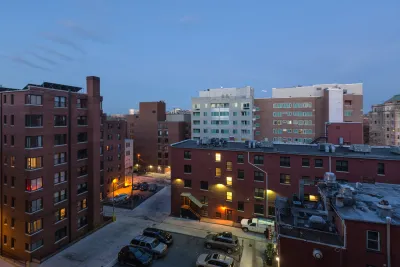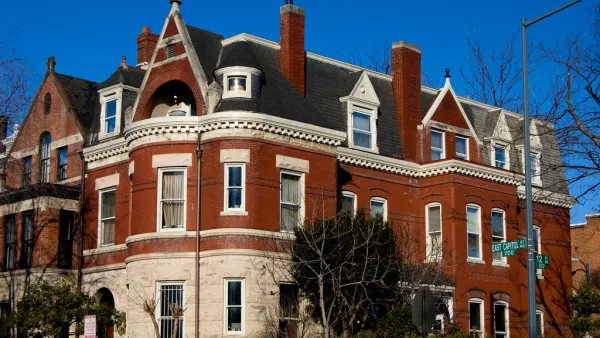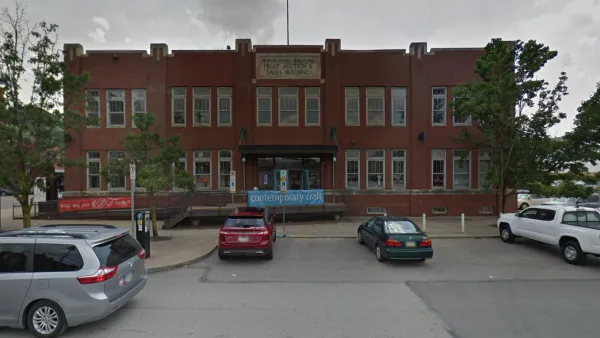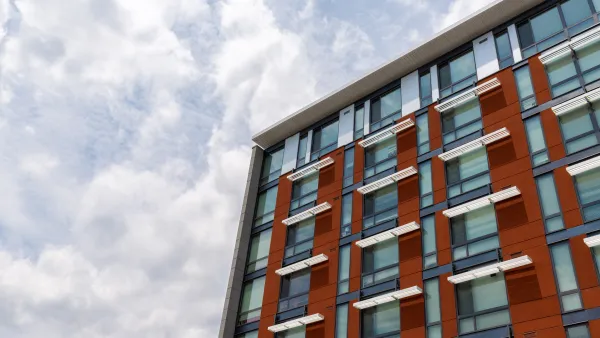Faced with commercial vacancies around 11 percent and the prospect of new office supply coming online soon, D.C. stakeholders are pushing for a bill that would provide incentives for conversions of office buildings into residential units.

Adaptive reuse—converting commercial buildings into residential uses—has spurred investment and the rebirth of downtown neighborhoods in cities like Los Angeles, Baltimore, and New York City. If new legislation under consideration by the Washington D.C. District Council is approved, the nation's capital could see a wave of conversions as well.
"To encourage conversions in the nation’s capital, where the office vacancy rate is around 11.4 percent, the district’s Council members are considering legislation to provide a tax abatement of up to $20 per square feet for 10 years, capped at $5 million a year," reports Eugene L. Meyer. The legislation has support from the DowntownDC and Golden Triangle business improvement districts.
The DowntownDC Business Improvement District released the "Downtown 2027: Vision for the Future" [pdf] report recently, which included an estimate that "new market-rate residences would be worth $600 a square foot, compared with empty office space valued at $450 a square foot." That additional value would more than pay for the cost of the tax abatements to jump start the conversions.
According to Meyer, the legislation isn't a sure thing. Mayor Muriel E. Bowser has expressed some reservations, namely questions about whether the conversations could generate revenue for affordable housing, and how much.
One curious anecdote from the article reporting on the pending legislation must also be noted. Meyer quotes Jack Evans, a Democratic member of the Council and the bill’s sponsor, in the article using the term "Manhattanizing" as a positive. That might be a first.
FULL STORY: A Push to Make Washington’s Downtown More Livable

Analysis: Cybertruck Fatality Rate Far Exceeds That of Ford Pinto
The Tesla Cybertruck was recalled seven times last year.

National Parks Layoffs Will Cause Communities to Lose Billions
Thousands of essential park workers were laid off this week, just before the busy spring break season.

Retro-silient?: America’s First “Eco-burb,” The Woodlands Turns 50
A master-planned community north of Houston offers lessons on green infrastructure and resilient design, but falls short of its founder’s lofty affordability and walkability goals.

Test News Post 1
This is a summary

Analysis: Cybertruck Fatality Rate Far Exceeds That of Ford Pinto
The Tesla Cybertruck was recalled seven times last year.

Test News Headline 46
Test for the image on the front page.
Urban Design for Planners 1: Software Tools
This six-course series explores essential urban design concepts using open source software and equips planners with the tools they need to participate fully in the urban design process.
Planning for Universal Design
Learn the tools for implementing Universal Design in planning regulations.
EMC Planning Group, Inc.
Planetizen
Planetizen
Mpact (formerly Rail~Volution)
Great Falls Development Authority, Inc.
HUDs Office of Policy Development and Research
NYU Wagner Graduate School of Public Service




























